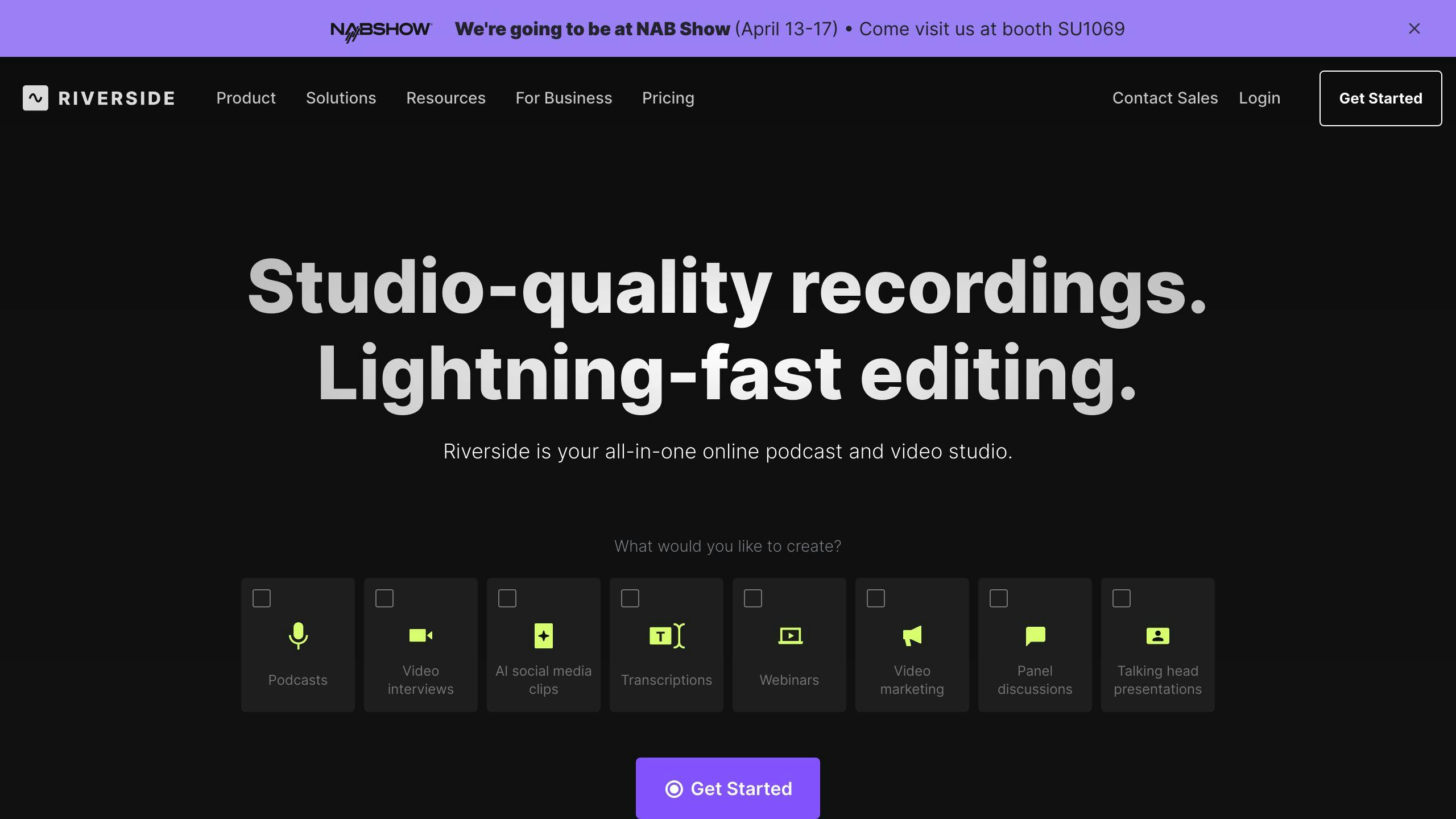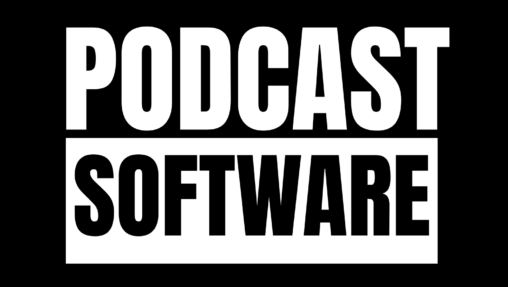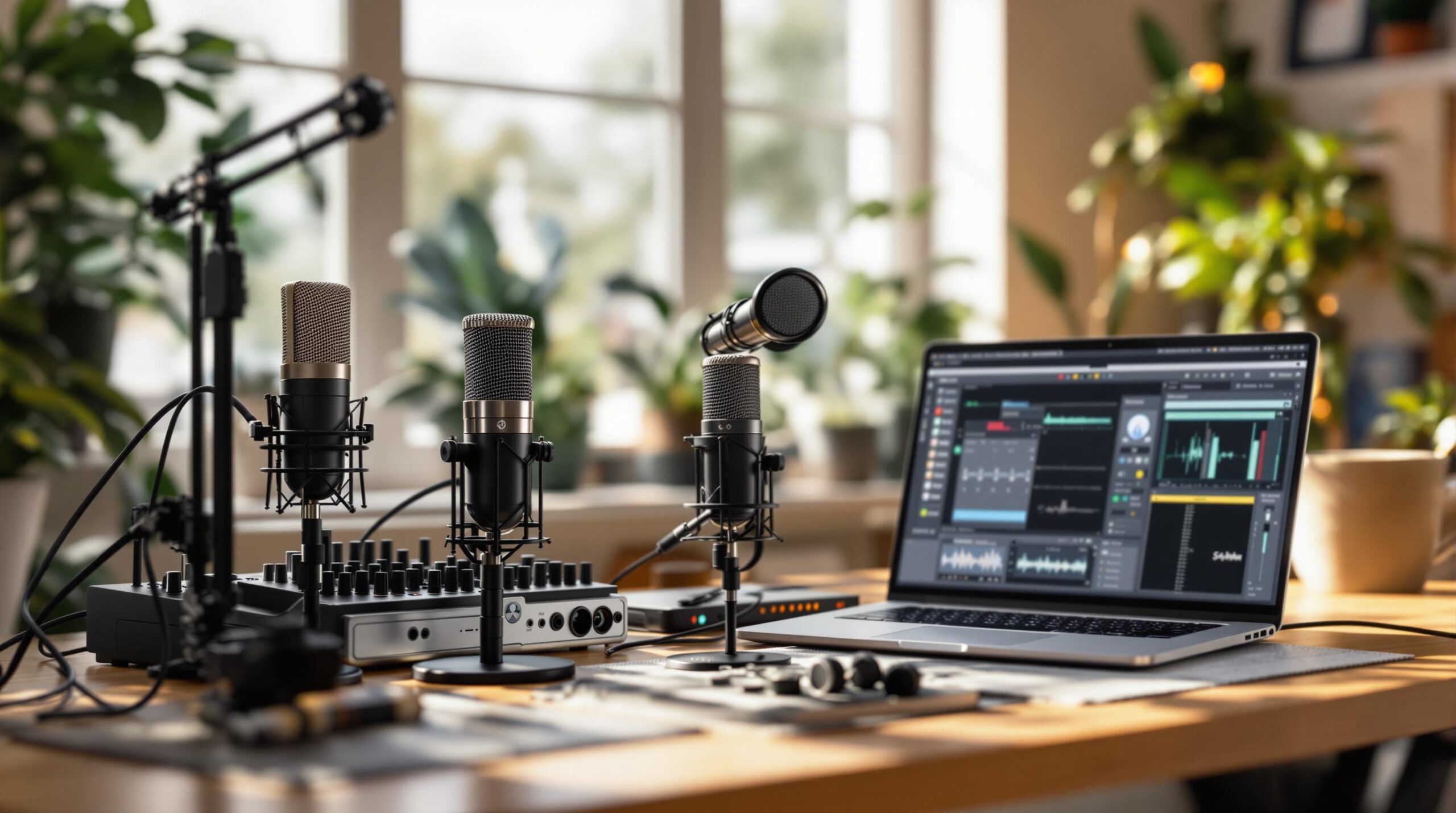Recording high-quality podcasts remotely can be challenging, but the right multi-track tools make it easier. These tools record each participant on separate tracks, ensuring better audio quality and simpler editing. Features like local recording, automatic backups, and guest-friendly interfaces help remote teams create polished episodes without technical headaches.
Key Features to Look For:
- Local Recording: Avoids internet glitches by recording directly on participants’ devices.
- Automatic Uploads & Backups: Prevents data loss and saves time.
- Video Recording: Adds versatility for creating promotional content.
- Guest-Friendly Integration: Simplifies participation with browser-based access and one-click joining.
Top Tools:
- Riverside: High-quality audio and 4K video recording with progressive uploads.
- Zencastr: Web-based with automatic mixing and transcription.
- Alitu: Beginner-friendly with automated editing and hosting.
- Waveroom: Budget-friendly with AI noise removal.
Quick Comparison:
| Platform | Key Features | Pros | Cons |
|---|---|---|---|
| Riverside | Local recording, 4K video | High-quality, reliable backups | Pricey advanced features |
| Zencastr | Browser-based, transcription | Easy to use, good audio quality | Limited free video recording |
| Alitu | Automated editing, hosting | Simple for beginners | Limited customization |
| Waveroom | AI noise removal, free plan | Affordable, beginner-friendly | Basic video and editing tools |
Choose a tool based on your budget, team size, and technical needs to improve your remote podcasting workflow.
Detailed Comparison: Riverside vs. Iris vs. Zencastr vs. Squadcast

Features to Consider in Multi-Track Recording Tools
When choosing a multi-track recording tool, focus on features that tackle common remote podcasting challenges like maintaining high-quality audio, safeguarding data, and simplifying guest participation.
Local Recording for High-Quality Audio
Local recording captures each participant’s audio directly from their device. This avoids issues like lag or dropped connections that often occur during remote sessions [1].
"Multitrack recording is written into Riverside’s DNA. It’s an automatic feature so you don’t even have to think about recording each participant individually" [1].
Automatic Uploads and Secure Backups
Progressive uploading transfers audio files to cloud storage during recording, which helps prevent data loss and cuts down on waiting time after the session ends [1][2].
For remote teams, automatic backups act as a safety net against recording errors. The best platforms also follow strict data protection protocols to keep your files secure [1][2].
Video Recording Capabilities
Video recording opens up opportunities for repurposing content, connecting with your audience, and creating promotional material. Tools like Riverside support up to 4K video quality while keeping separate tracks for both audio and video [1][4].
While video features add value, ensuring smooth guest participation is equally important for a successful recording.
Simplified Guest Integration
User-friendly interfaces make remote sessions easier for guests. Features like browser-based access, one-click joining, and backup recording options reduce technical hurdles, creating a more seamless experience [2][3].
Key Features for Guest-Friendly Integration:
- Browser-based access: No software downloads needed
- One-click joining: Minimizes setup hassles for guests
- Green room functionality: Allows pre-recording checks and adjustments
- Backup recording options: Ensures reliable guest audio capture
Platforms with sound check tools and straightforward controls help non-technical guests feel comfortable. This allows you to focus on creating great content instead of troubleshooting [1][2].
Best Multi-Track Recording Tools for Remote Podcasting
Let’s dive into some of the top multi-track tools designed to make remote podcasting easier and more efficient.
Riverside
Riverside is known for its high-quality recordings and AI-powered features. It supports audio recording at up to 48kHz and offers 4K video recording, making it a great choice for teams producing both audio and video content [2].
| Pros | Cons |
|---|---|
| Local recording at 48kHz | Advanced features can be pricey |
| 4K video recording | Needs a reliable internet connection for setup |
| Progressive uploading | Free plan has limited features |
| Separate tracks for each participant | Storage caps on lower-tier plans |
Zencastr
Zencastr is a web-based platform that simplifies remote podcasting. Its automatic mixing and transcription tools are perfect for streamlining post-production tasks [2][3].
| Pros | Cons |
|---|---|
| Automatic mixing and transcription | Video recording is only available on paid plans |
| Accessible via browser | Can experience occasional sync issues |
| Maintains audio quality even with internet interruptions | Real-time features like transcription need a solid internet connection |
| Beginner interface may feel overwhelming |
Alitu

Alitu focuses on making podcast production as simple as possible. With automated editing and volume adjustments, it’s ideal for teams without much technical experience [5].
| Pros | Cons |
|---|---|
| Automated cleanup and editing | Lacks advanced editing tools |
| Includes hosting | Costs more than other beginner-friendly platforms |
| Easy-to-use interface with publishing tools | Limited customization options |
| Basic recording features |
Waveroom

Waveroom is a beginner-friendly platform offering professional features like AI noise removal. Its free plan makes it appealing to teams just getting started [3].
| Pros | Cons |
|---|---|
| AI noise removal | Free plan limits export options |
| Budget-friendly pricing | Video quality and editing tools are basic |
| Free plan available | Fewer integrations compared to competitors |
| Simple interface for beginners | Lacks advanced features |
Each platform caters to different needs, so think about your team’s goals, skill level, and budget when picking the best tool for your podcasting workflow.
sbb-itb-9f49a8d
Choosing the Right Tool for Your Team
Budget Evaluation
When looking at multi-track recording tools, it’s important to weigh your budget against the features you need. Many platforms use tiered pricing based on factors like recording hours, team size, and available tools. For example, Riverside offers a free plan (with watermarks) and paid plans starting at $19/month [1][3]. Opting for annual subscriptions often brings discounts.
Free plans usually come with limitations like watermarks or restricted exports. On the other hand, professional and enterprise plans unlock advanced features, more storage, and priority support.
Balancing Features and Simplicity
The best tool is one that aligns with your team’s technical skills while offering the functionality you need. For teams with mixed technical expertise, platforms like Alitu provide automated tools and an easy-to-navigate interface [3].
Focus on tools that combine the features you need with a user-friendly design and solid support options. As your podcast grows, you’ll also want a platform that can handle increased demands.
Growth and Scalability
Beyond budget and usability, scalability is key for adapting to a growing audience and expanding content needs. Look for tools that offer:
- Enough storage for your growing library
- Flexible options for managing guests
- Integrations with your existing tools
Zencastr, for instance, offers tiered plans that allow teams to upgrade as they grow [3].
"Selecting a tool that cannot support future growth can lead to additional costs and logistical challenges when upgrading. It is essential to choose a tool that can scale with the team’s needs, such as Riverside, which offers tiered plans and annual savings." [3]
Platforms like Riverside make it easier to scale up when needed, helping you avoid the hassle and expense of switching platforms down the line.
Conclusion: Boost Podcast Quality with the Right Tools
Remote podcast production thrives when you choose multi-track tools tailored to your team’s needs. Platforms like Riverside tackle common remote challenges by recording audio locally on each participant’s device, ensuring high-quality sound [1] [2].
Features such as automatic uploads and secure backups simplify workflows, saving time while maintaining top-notch output [2] [3]. These modern tools bring studio-level capabilities to remote teams, helping maintain professional standards.
Platforms like Riverside and Zencastr make high-quality podcasting achievable for remote teams of any size [2]. They include key features like local recording, reliable backups, and user-friendly interfaces that make remote collaboration easier.
"Using the right tools can streamline your workflow, enhance teamwork, and ensure that every episode is a success." [4]
As podcasting continues to grow, keeping up with the latest tools is crucial. For detailed recommendations on podcast software, from hosting platforms to editing tools and podcast players, check out Podcastsoftware.co. It’s a great resource for staying informed about the newest solutions in the industry.
Investing in the right tools is a step toward better podcast quality and growth. By focusing on features like local recording, automatic backups, and seamless guest integration, you’re setting your podcast up for success. Reliable and easy-to-use tools allow remote teams to concentrate on creating engaging content without getting bogged down by technical issues.
FAQs
How to record multiple tracks for a podcast?
Platforms like Riverside and Zencastr make remote podcast recording easier by creating separate audio tracks for each participant. They also ensure high-quality sound by recording locally on each participant’s device [1][2].
Key Tips for Multi-Track Podcast Recording:
| Aspect | Recommendation |
|---|---|
| Audio Quality & Backup | Use tools with local recording and automatic backups to prevent data loss or internet issues [1][2] |
| Equipment & Collaboration | Provide participants with good-quality microphones and choose platforms that are easy for guests to use [3] |
Maintaining consistent audio levels and reducing background noise during editing is essential for a polished podcast. Tools like Zencastr and Alitu offer built-in editing features to simplify this process [2][3].

